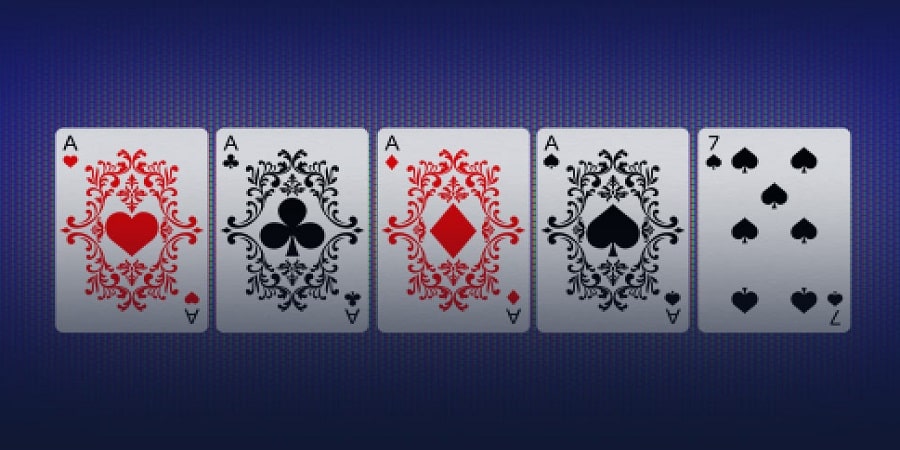How to play pairs and streets in video poker
Video poker players are faced with a difficult choice: stick to basic strategies or try to find better winning strategies.
Video poker decisions regarding what to do with the cards are usually easy for players to make. But sometimes the outcomes can be unpredictable, which can make things a little tricky. A good example of this is deciding between a pair combination and getting the straight.
Some interesting examples
Consider this situation. Playing video poker, a player gets the following cards of different suits: 3, 4, 4, 5, 6. So here’s a two-fold situation: an unpaid pair of fours or the possibility of getting the straight. If you choose the second option, you should discard one four. Another way to go is to keep the pair you have in the hopes that you’ll get another four and get a set. It’s also possible that a pair or another four can fall along with it. As a result, we can talk about a possible full house or a carêt, which is much stronger than a straight.
A mathematical expectation calculation can help make a decision in this situation. It’s pretty simple, and there are plenty of software programs that do it automatically. In the example, with 1€ bet, the expectation is 82 cents, keeping the two fours. And the straight is 68 cents. This makes the choice obvious.
Suppose another situation: a roll of 8, 9, 10, and two jacks. As in the previous case, all the cards are of different suits. The first thing to note is that, unlike a pair of fours, a pair of jacks is a paying pair. So at first glance, it might seem that this pair should be kept, as it’s even more lucrative.

However, if you’re going to base your choice on the mathematical expectation, you’ll have to consider that it’s a bit higher for a straight, 72 cents at 1€. Because if the straight combination doesn’t make it, there’s a good chance you’ll get a second jack, which should give you a chance to win.
If the combination contains a high card, the expectation is higher. It is also possible that the player will get two tens, a jack, a queen and a king. At first glance, this may seem to be an ambiguous choice. One can keep the pade of tens since it also pays. In that case the mathematical expectation will be 82 cents. And if you leave the carats on the straight, the mathematical expectation would be 87 cents. That is to say the second variant should be chosen, because it is more profitable.
Conclusion
Probably there’s no simple answer to the question what’s better: leaving a pair or taking a chance and getting the straight. When faced with small cards, it’s better to call a pair. If there’s a chance of getting a paying pair, cards should be left on the straight.
You should always rely on the mathematical expectation. It can be about the same, only two cards make a paying pair, and two cards don’t.
It is possible to have a non-consecutive Straight, such as 8, 10, 10, Jack, Queen and King. In that case, you only have to keep the cards if at least three cards make a paying pair. If the cards are of the same suit and there is a possibility of a straight flush, they must be caught, even if they are not in the sequence and there is a paying pair. The risk in this situation is justified by the high payout of such a combination.
